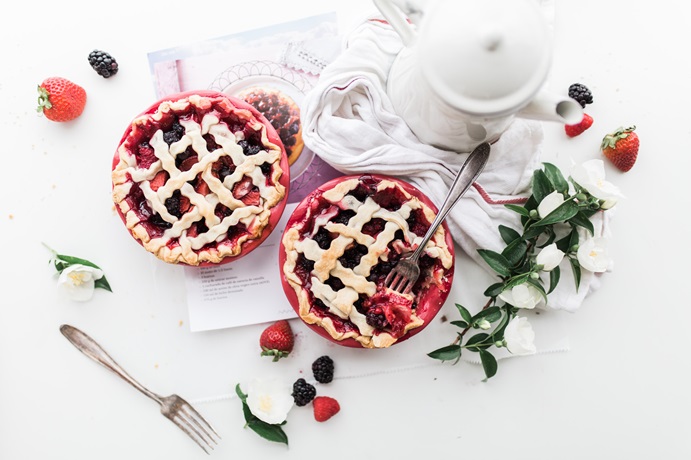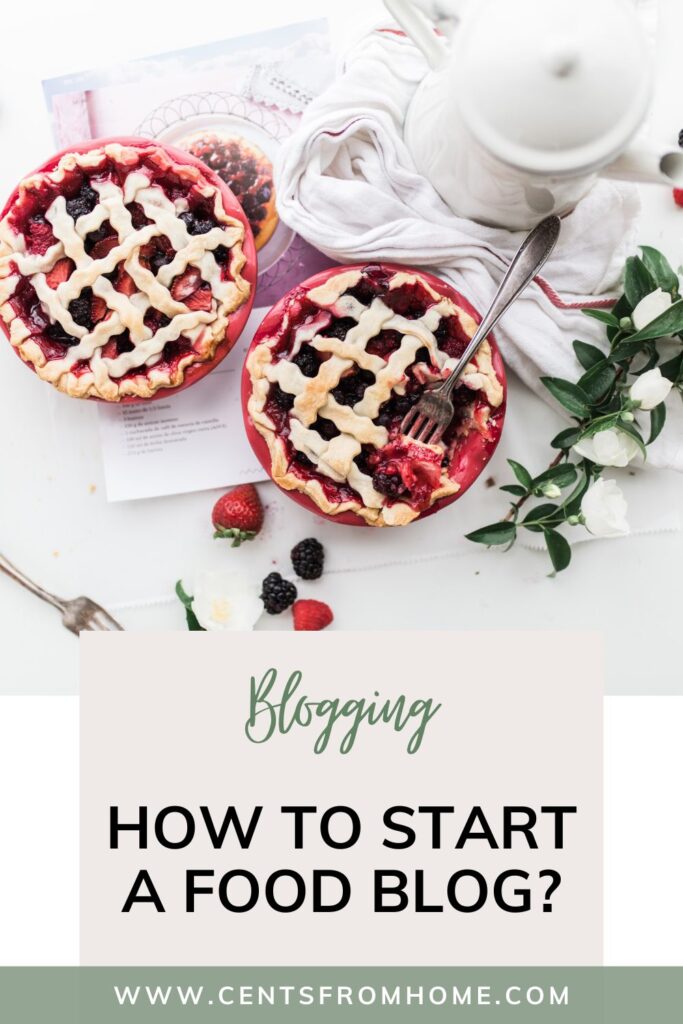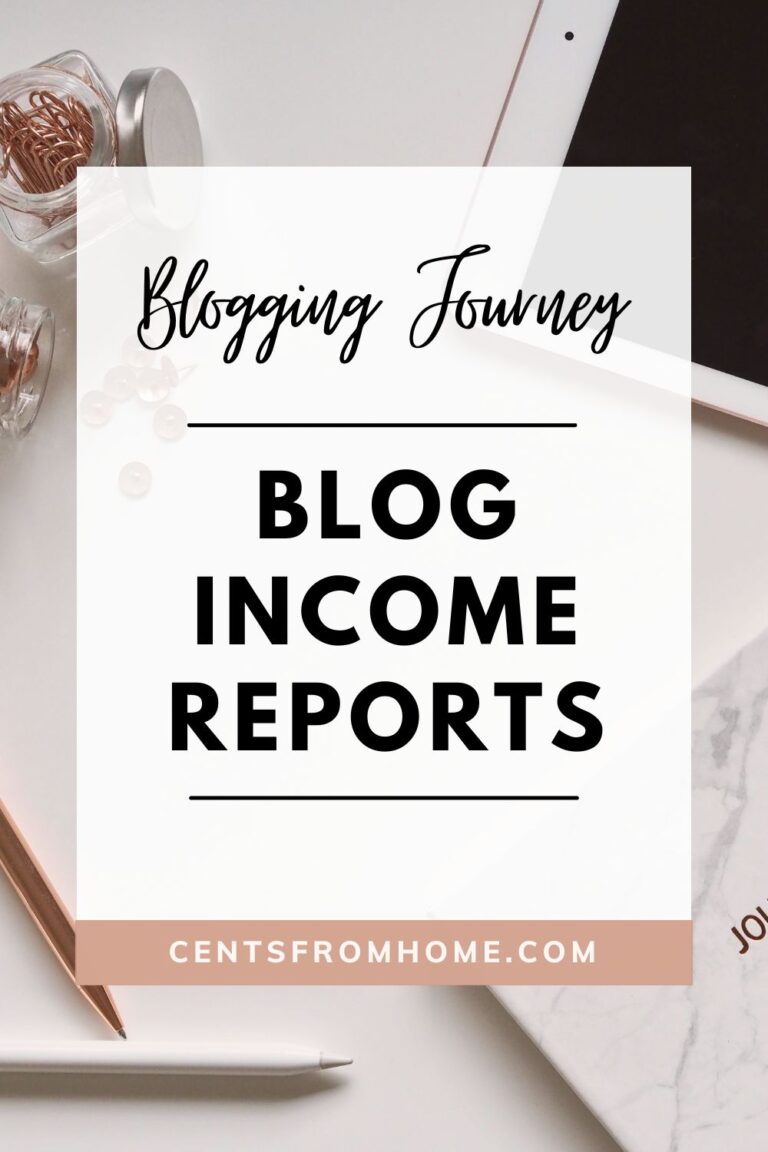How to start a food blog?

Starting a food blog is an exciting way to share your passion for cooking and eating with other foodies all over the world! Whether you are a professional cook or an amateur enthusiast, there are many opportunities to create content that is both informative and entertaining. If you want to start your own food blog, there are a few steps to follow in order to get up and running. In this blog post, we’re going to look at everything you need to do in order to start your own food blog and make it a success.
Step 1: Choose a food blog niche and type
Before you can start writing recipes and sharing your foodie adventures, you’ll need to decide what kind of blog you want to create. Do you want to focus on healthy eating, vegetarian recipes, or maybe something more specific like Italian cuisine? Knowing your niche will help you focus your content and make sure your blog appeals to a specific audience.
Which are some food blog niches?
Some of the most popular food blog niches include:
- Healthy eating
- Vegetarian recipes
- Vegan recipes
- Keto diet recipes
- Gluten-free recipes
- Italian cuisine
- Vegan food
- Desserts and baking
- Gourmet cooking
- Food photography
- Cocktails and drinks
- Baking and desserts
- Cooking for kids or picky eaters
- Recipes for busy people
- Quick recipes
- Paleo diet
- Travel and dining out
- International cuisines and ingredients
- Cooking with seasonal ingredients
- Wine pairings
- By country (Italian, French, Japanese, Indian, Thai, Mexican, etc.)
Step 2: Set up your food blog
Now that you know what kind of blog you want to create, it’s time to set up your blog and get started! If you’re new to blogging, there are a few things to consider.
Choose a name for your food blog and buy the domain
If you’re ready to launch your food blog, the first important step is selecting a domain name. Consider adding “food” at the end of your title, making an amusing pun with food or cuisine-related words (ie: Forkable, Foodgasm), or coming up with something totally special. After deciding on a name and registering it as a site address/domain, you’ll need to purchase it so that building your blog can commence! For those unsure of where to buy domains from – Bluehost is an excellent choice I personally use.
Choose a hosting provider
Once you’ve got your domain name and are ready to launch your blog, the next step is to choose a hosting provider. This is the company that will be responsible for storing your blog’s content, images and other files. I highly recommend using Bluehost as they offer affordable and reliable hosting plans.
Set up your blog with WordPress
The beauty of using WordPress (the most popular platform for blogging) is that you can easily set up a blog with minimal tech knowledge. WordPress is easy to use, can handle most of your content (including images, audio and video), and will provide you with the design tools to make your blog look great.
Choose a food theme for your blog
Once WordPress is installed, it’s time to choose a theme for your blog. There are thousands of different themes available, but it’s best to choose one that’s specifically designed for food blogs. Look for one with a design and layout that fits the niche you’ve chosen and think about any special features, such as custom menus or recipe cards.
With over 4,000 themes available on WordPress.org, finding one that suits your needs is effortless! To select a theme simply navigate through Appearance > Themes> Add New and you’ll be presented with a wide variety of options to choose from.
To find the perfect theme for a food blog, simply type relevant keywords like ‘food’, ‘recipe’ or ‘cook’ in your search bar and explore all available options.
If you’re searching for a beautiful design that will also provide all the features your website needs, look no further than ThemeForest or Creative Market. When picking out a theme, make sure to check if it’s been recently updated and read some customer reviews. Also confirm if the theme is responsive and be aware of any additional features you may require. With these in mind, buying your perfect premium theme has never been easier!
Look no further! Here are the crème de la crème of food blog themes to help you take your content game to the next level.
Tiny Salt ($54). a delightful and sophisticated blog theme for food bloggers! This amazing package features 12+ ready-made homepages, an intuitive recipe manager (including step by step instructions, video recipes, review & ratings), complimentary round up posts and instant recipe search. Don’t miss out on this incredible opportunity to take your content to the next level – get your copy of TinySalt today at just $54! Buy here.
FoodBlog ($59). FoodBlog is the perfect WordPress theme for food bloggers who are looking to take their content game to the next level. From a visually stunning design to the amazing features, FoodBlog has it all! This package comes with 6+ ready-made homepages, intuitive recipe manager (including step-by-step instructions, video recipes, review & ratings), complimentary round up posts and instant recipe search. Get your copy of FoodBlog today at just $59! Buy here.
Step 3: Create a content plan for your food blog
With your blog now up and running, it’s time to get creative! If you’re still uncertain where to start when it comes to the content of your blogging journey, explore what some of the top food blogs are doing that really catches your eye. Here are a few ideas for potential pieces: recipe roundups, comprehensive how-to posts with step by step instructions, restaurant reviews and recommendations from industry insiders, behind-the-scenes looks at various companies or events in the culinary sphere; tutorials on taking mouthwatering photos fit for any magazine spread; interviews with renowned chefs or other professionals in this space; city wise guides to popular eateries. So be sure not to run out of options anytime soon!
How to create a food blog calendar?
Crafting a successful food blog requires commitment and dedication, but the most essential step is to build a content plan. This means constructing an editorial calendar–a timeline of all your planned blogs posts. A tried-and-true approach for creating this agenda starts by pinpointing who you are trying to reach with your blog and what themes would be of prime interest to them. To do so, utilize keyword research as well as think up ideas relatable to their hobbies and needs.
Understanding your audience is the key to creating content that will captivate and keep them coming back for more. To get to know your readers, pay attention to survey results, comments and feedback you receive as well as what gets shared frequently on social media platforms. With this knowledge in hand, you can craft blog posts tailored specifically for them – guaranteeing relevance and value every single time!
Creating a successful food blog calendar requires setting goals and objectives that you want to reach through your content. For example, if the aim is to generate search engine traffic, then creating keyword-rich posts covering popular topics would be ideal for achieving this goal. By keeping these aims in mind with each piece of content you create, you can ensure that your efforts are targeted at producing effective results from your blogging endeavors.
For a lucrative food blog, devising and adhering to an organized weekly posting agenda is essential. This will help you stay dedicated to the task at hand and guarantee that your readers are continually supplied with up-to-date content that would be of great interest to them.
Firmly following through on the plan set forth by your editorial calendar is just as important; this way, you can maintain a steady publishing cycle while remaining consistent in delivering engaging content for viewers!
How to make your food blog stand out from the crowd?
One of the best ways to stand out from the crowd in the food blog world is to become an expert in your niche. This means writing quality content that is relevant to your target audience and provides them with valuable information.
To become an expert in your niche, start by focusing on a few specific topics or areas that you want to write about. Once you have a good understanding of the type of content you want to create, you can start to build your credibility by sharing informative blog posts, publishing helpful guides and tutorials, and connecting with other industry professionals.
Some tips for owning your niche and becoming an expert include:
- Focusing on a few specific topics or areas that you want to write about
- Becoming a resource for your readers by sharing expert advice and insights
- Participating in online communities and forums related to your niche, such as food photography communities or recipe-sharing groups
- Connecting with other industry professionals and collaborating on projects
Additional content tips for your food blog
Learn to take amazing photos
A key component of a successful food blog is having attractive and appetizing photos to accompany your recipes and posts. If you’re not confident in your photography skills, there are a few things you can do to improve the look of your photos.
- Invest in a high-quality camera or smartphone lens kit to help you capture beautiful images of your food.
- Try tools like Lightroom or Photoshop to improve the look of your photos.
- Get the Tasty Food Photography eBook from Pinch of Yum ($29). It is an amazing book that will teach you about food staging, how to take amazing pictures, and how to enhance them. I bought this book a couple of years ago and it’s a gem.
Learn about food staging
Another key aspect of food photography is staging your photos in an interesting and visually appealing way. This can involve using props to add color, texture, and visual interest to your photos.
Some tips for food staging include:
- Arranging your food in an interesting and appealing way
- Using props to add color, texture, and visual interest
- Incorporating natural elements like fruits, vegetables, herbs, flowers, or textiles
- Experimenting with different angles and perspectives to find the most appealing composition for your photo
Try to maintain consistency in visuals!
In addition to mastering your photography skills, it’s important to pay close attention to the visual elements of your food blog. This means keeping your blog’s overall design and aesthetic consistent with your food photos and recipes.
Some tips for maintaining visual consistency on your food blog include:
- Developing a color scheme and sticking to it
- Using similar fonts and typography throughout your blog
- Organizing your blog layout in a way that is visually appealing and easy to navigate
- Including high-quality images that are relevant to your content
Add videos
A recent study showed that including videos on your website can help to improve your search engine ranking.
Not only that, but videos can also be a great way to engage your audience and add another level of visual interest to your blog.
If you’re not sure where to start, consider investing in some video editing software and experimenting with different techniques. You can also try recording videos using your smartphone or webcam, or even using tools like YouTube or Vimeo to upload and share your videos with a wider audience.
Overall, adding videos to your food blog is a great way to engage your audience, improve your search engine ranking, and add another level of visual interest to your blog.
Step 4: How to promote your food blog?
Once you have built your blog and started publishing content, the next step is to promote it. To help gain more readership and engagement for your food blog, here are a few marketing tactics you can try:
- Create and share engaging social media posts. Share your new blog posts on Twitter, Facebook, and Instagram to get more eyes on your content.
- Use email newsletters to promote your blog posts. If you have an email list of fans, use it to notify them when you publish a new blog post.
- Take advantage of food blogging communities like FoodGawker and Tastespotting. These websites are great for gaining exposure and connecting with other food bloggers.
- Create a blog post series. Write several posts that relate to the same topic and link them together using internal links. This will help keep readers engaged and make it easier for them to find related content on your blog.
- Reach out to other food bloggers and websites for guest posts or collaborations. This can help you reach a wider audience and introduce your blog to new readers.
- Write press releases or contact local media outlets to see if they would be interested in featuring your blog or recipes on their sites.
- Increase your blog’s visibility and search engine rankings by optimizing it for SEO.
- Investing in paid advertising, such as Facebook ads or promoted posts on social media.
Overall, there are many great ways to promote your food blog. The key is to experiment and see which tactics work best for you. With some hard work and dedication, you can use these tactics to help your blog grow and reach a larger audience. Good luck!
How to drive traffic to your food blog with SEO?
One effective way to drive traffic to your food blog and boost your search engine rankings is through SEO, or search engine optimization. This involves optimizing your website and content for search engines, and using various tactics to increase your visibility in the results.
Some key SEO strategies for food blogs include:
- Optimizing your blog posts and titles with relevant keywords that people are likely to search for.
- Creating shareable, linkable content that other websites will want to link to.
- Building backlinks from high-quality websites to improve your link popularity.
- Using social media to share your content and engage with relevant communities.
- Regularly updating your blog’s metadata, such as page titles and descriptions, to help it rank higher in the search results.
Overall, by adopting an SEO-focused approach to promoting your food blog, you can not only improve your search engine rankings and increase your visibility online, but also drive more targeted traffic to your website.
How to drive traffic to your food blog with social media marketing?
Social media is another powerful tool that you can use to promote your food blog and reach a larger audience. Some effective social media marketing strategies for food blogs include:
- Creating a strong presence on platforms like Facebook, Instagram, and Pinterest, by sharing high-quality content and engaging with other users
- Building relationships with other food bloggers and influencers in your niche, and collaborating on social media campaigns
- Running social media ads and promotions to reach a wider audience and drive more traffic to your blog.
- Using tools like influencer marketing platforms or social media management software to identify, track, and engage with potential customers.
No matter which social media platforms you decide to focus on, the important thing is to create and share engaging content that will resonate with your target audience.
How to promote your food blog with email marketing??
In addition to social media, email marketing can also be an effective strategy for promoting your food blog and growing your audience. Some key email marketing tactics to consider include:
- Designing attractive and engaging newsletters or email campaigns that showcase your latest blog posts.
- Building a robust email list by offering exclusive content, discounts, or other incentives to subscribers.
- Using email marketing software and platforms, such as MailChimp or Constant Contact, to track and analyze your performance metrics.
- Utilizing email segmentation and personalization techniques to target specific segments of your audience based on their interests or browsing behavior.
- Engaging with your subscribers through email automation and triggered messages, such as welcome emails or abandoned cart reminders.
With a well-designed email marketing strategy, it is possible to build a strong, loyal following of readers who are eager to get your latest updates and announcements.
How to promote your food blog with collaborations with other food bloggers and influencers?
One of the best ways to grow your food blog and build a successful career as a food blogger is to network with other bloggers. This can help you to learn from their success, collaborate on projects, and get your name out there in the blogging world.
To find other bloggers to network with, start by searching for food blogs in your niche. Once you have a good understanding of the type of content you want to create, you can start to build your credibility by sharing informative blog posts, publishing helpful guides and tutorials, and connecting with other industry professionals.
Some tips for networking with other food bloggers include:
- Attending food blogging conferences and events.
- Joining online communities and forums related to your niche.
- Reaching out to other bloggers for advice or collaboration opportunities.
- Sharing your own content and engaging with others in the food blogging community.
With a strategic approach to content creation, promotion, and networking, you can build a successful food blog that resonates with your target audience and helps you to achieve your long-term career goals.
Step 5: How to monetize your food blog?
One of the most common questions that food bloggers have is how they can monetize their blog and make money from their passion. While there are a number of different ways to monetize a food blog, some of the most popular methods include:
Affiliate Marketing
Affiliate marketing is a type of performance-based marketing in which a company pays other websites or individual bloggers to promote their products or services. By including affiliate links in your blog posts, you can earn a commission each time someone makes a purchase based on your recommendation.
To get started with affiliate marketing, you can sign up for an affiliate network such as ShareASale, CJ Affiliate, or Rakuten Linkshare. These platforms will provide you with access to a wide range of products and services that you can promote on your blog, as well as tracking tools and reporting features to help you measure your performance.
Partner with brands or companies
Another effective monetization strategy for food bloggers is to partner with brands or companies that are a good fit for your blog. This can include taking on sponsored content projects, working with product sponsorships or endorsements, or collaborating on content creation projects like recipe development or food photography. By teaming up with brands that align with your blog’s niche and content, you can create high-quality content that will appeal to your readers and help you to generate additional income.
Advertising
Many food blogs also monetize their content by including traditional online display ads or sponsored ads within the body of their blog posts. If you have a large and engaged audience, advertising can be a great way to generate additional revenue from your blog while also connecting with brands and companies that share your values and interests. To get started with advertising on your food blog, consider partnering with an online ad network, or reaching out directly to relevant brands or companies that you would like to work with.
Selling products
In addition to promoting other brands and products, many food bloggers also sell their own products, such as e-books, cooking courses, or meal plans. If you have valuable content to offer your readers, selling products can be a great way to monetize your blog and generate additional income.
No matter what monetization strategy you choose, remember that creating quality content that resonates with your audience should always be your top priority. By focusing on delivering valuable and engaging content, you can build a successful food blog that helps you to achieve your long-term career goals.Whether you’re just starting out or you’ve been blogging for years, there are many effective strategies that you can use to monetize your food blog. Some of the most popular options include affiliate marketing programs, sponsored content, and advertising. By using a combination of these strategies, you can build a successful food blog that generates a significant amount of revenue each month.
In conclusion, starting a food blog can be an incredibly rewarding experience. Whether you’re just starting out or you’ve been blogging for years, there are many effective strategies that you can use to monetize your food blog. By using a combination of affiliate programs, sponsored content, advertising and product sales, you can build a successful blog that generates a significant amount of revenue each month. Ultimately, the most important thing is to focus on creating quality content that resonates with your readers and helps you to achieve your long-term career goals. Good luck!
Check this post for the top food and cooking blog examples.
Related posts
Which are the most profitable blog niches?
How to choose a name for your blog? (Practical guide)
How to make money online: Blogging







